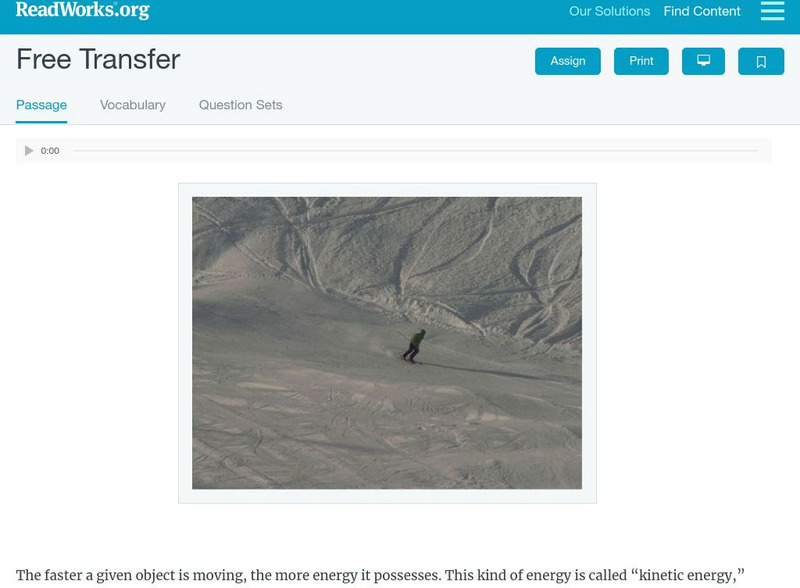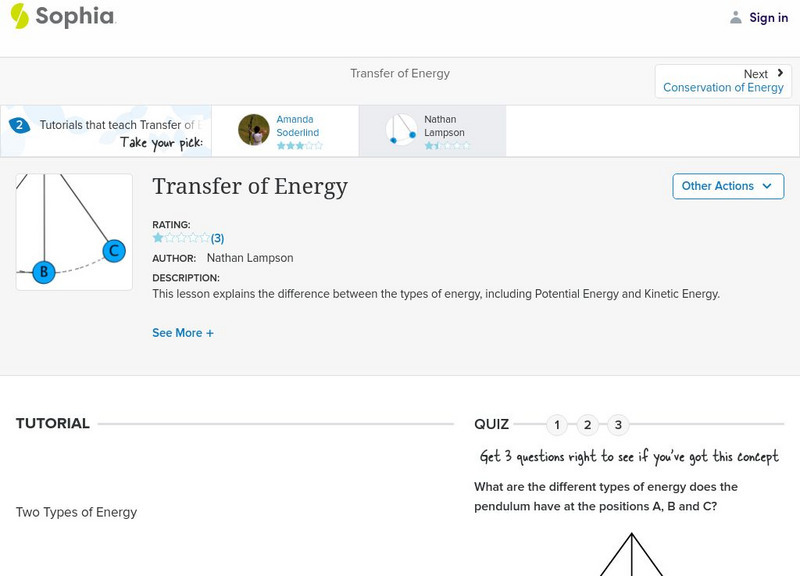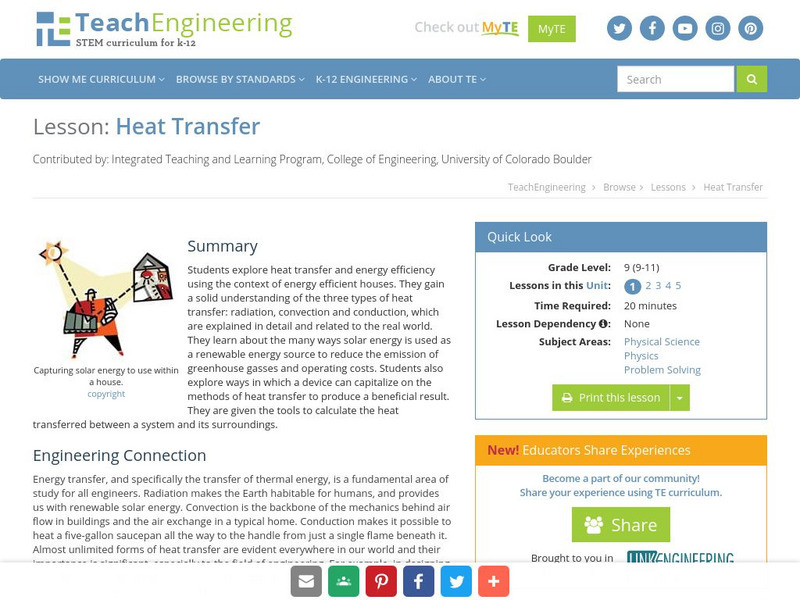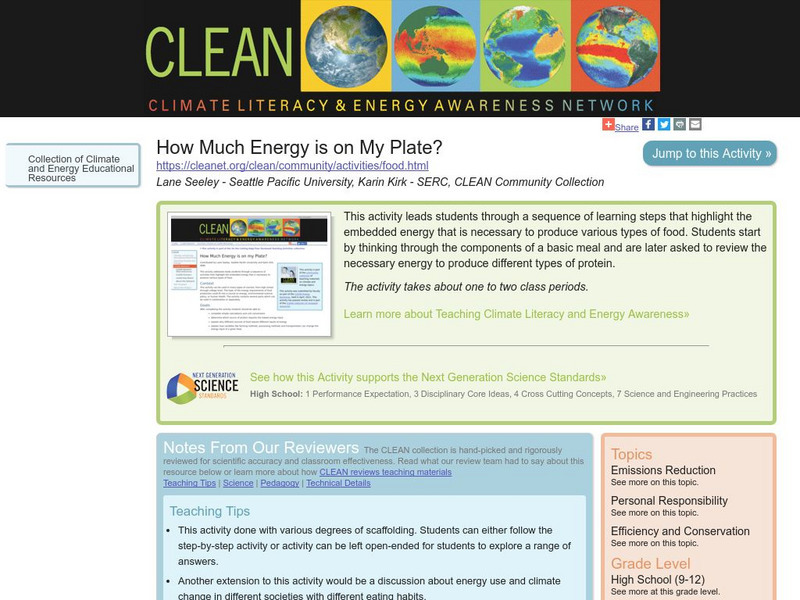Curated OER
Applied Science - Technology (2A) Post Lab
Second graders explore simple machines. In this technology instructional activity, 2nd graders look at pulleys and gears and what the uses are for each. They complete a worksheet comparing the two.
Curated OER
Capturing Wind Energy
Students investigate technology and make a correlation between technology and the weather. In this science activity, students experiment with the weather and climate using technology to help them understand forces and motion. They...
Curated OER
Paper Towel Structure
Learners investigate technology and its purpose in the workplace. In this geometry lesson plan, students design and build a paper towel structure to investigate motion and forces. They are given a restricted weight and asked to build...
Curated OER
Exploring the Solar System
Your students can learn more about our solar system with these lesson plan ideas.
Curated OER
Creating Station Models
Young scholars work in groups to interpret weather maps. They use latitude and longitude readings to complete a worksheet together and turn in the worksheet along with the maps and a rubric.
Curated OER
Hot Gas Or Cold Gas Lab
Students engage in a lab project to study chemical reactions. They use guided questions to help facilitate the lab experience and come to the correct outcomes. The lesson does not contain a true understandable objective. The lesson could...
Curated OER
Pendulum Clocks
Students use string, wire, weights, and a stopwatch to build pendulum clocks. For this pendulum clocks lesson plan, students use the pendulum clocks to investigate weather, climate, force, and motion.
Curated OER
Leyden Jar: Static Electricity
Students experiment with a Leyden Jar, a device that stores electrical charges. A large voltage can be built up in this jar by adding more and more charge. The modern name for this device is a capacitor.
Curated OER
Corrosion & Rust
Students examine how and when rust and corrosion occur. In this corrosion lesson students complete an experiment to see why metals rust.
Curated OER
Ecology
Sixth graders are introduced to online research and beginning PowerPoint presentations that are integrated. They pass a plant and photosynthesis. Students locate information on a self selected animal online. They give a PowerPoint...
Curated OER
Volcanic Violence
Students complete activities to study volcanic activities. In this volcanic activities lesson, students read an article about violent volcanoes. Students complete discuss questions and volcano projects for the lesson. students also take...
CK-12 Foundation
Ck 12: Fourth Grade Science: Physical Science: Types of Energy
[Free Registration/Login may be required to access all resource tools.] Discusses ways in which energy can be transferred, what kinetic energy is and types of potential energy. Includes examples of energy conversions.
Sophia Learning
Sophia: Transfer of Energy: Lesson 1
This lesson explains the difference between the types of energy, including Potential Energy and Kinetic Energy. It is 1 of 2 in the series titled "Transfer of Energy."
eSchool Today
E School Today: Energy
Explains different kinds of energy, covering kinetic, potential, gravitational, mechanical, sound, thermal, chemical, electrical, and radiant energy. Also looks at storage, transfer, and dissipation of energy. Includes a short...
Read Works
Read Works: Free Transfer
[Free Registration/Login Required] This passage discusses different types of energy transfer. This text is a stand-alone curricular piece that reinforces essential reading skills and strategies and establishes scaffolding for vocabulary...
TeachEngineering
Teach Engineering: Energy
Through nine lessons, students are introduced to a range of energy types--electrical, light, sound and thermal-as well as the renewable energy sources of wind, hydro (water) and solar power. Subjects range from understanding that the...
Sophia Learning
Sophia: Transfer of Energy: Lesson 2
This lesson explains the difference between the types of energy, including Potential Energy and Kinetic Energy. It is 2 of 2 in the series titled "Transfer of Energy."
Texas Education Agency
Texas Gateway: Introduction to Potential and Kinetic Energy
Energy is the ability of a system to do work. That system may be batteries powering an electronic game system or windmills capturing wind energy to power a city. When an object or an organism does work, energy is transferred to another...
TeachEngineering
Teach Engineering: Energy Storage Derby and Proposal
In Activity 5, as part of the Going Public step, students demonstrate their knowledge of how potential energy may be transferred into kinetic energy. Students design, build and test vehicle prototypes that transfer various types of...
Oklahoma Mesonet
University of Oklahoma: Overview of Meteorology
The University of Oklahoma explores numerous types of weather and atmospheric changes, as well as the reasons behind them. Content details the four seasons, common meteorological variables, the vertical structure of the atmosphere, how...
TeachEngineering
Teach Engineering: Heat Transfer
Students explore heat transfer and energy efficiency using the context of energy efficient houses. They gain a solid understanding of the three types of heat transfer: radiation, convection and conduction, which are explained in detail...
Other
Characteristics of Energy and Matter
A lengthy page from the Fundamentals of Physical Geography site. Energy is distinguished from matter, and the different forms of energy are identified and discussed. Four types of heat transfer (convection, advection, conduction,...
Climate Literacy
Clean: How Much Energy Is on My Plate?
This activity leads students through a sequence of learning steps that highlight the embedded energy that is necessary to produce various types of food. Students start by thinking through the components of a basic meal and are later...
Science Education Resource Center at Carleton College
Serc: Construction of a Complex Machine Through Classroom Collaboration
Students take a simple task and make it much more complicated using a cardboard box. Each group must use a minimum of six simple machines utilizing at least four types of simple machines. The goal is to keep the initial impulse moving...























